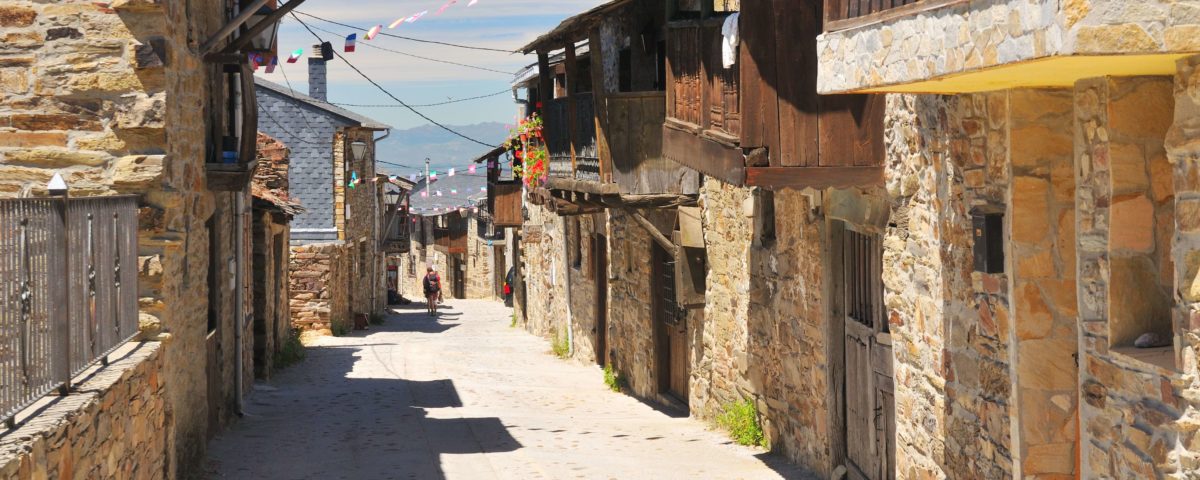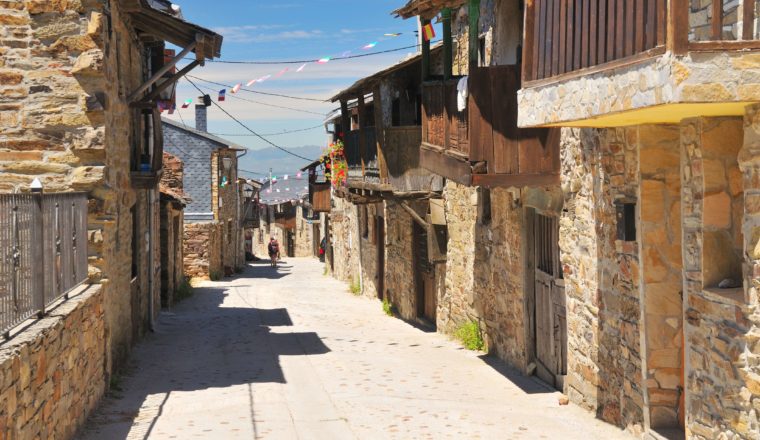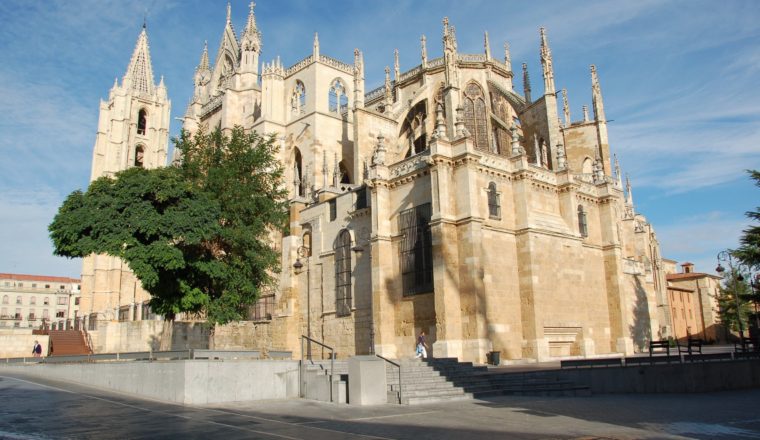
Spain’s Camino de Santiago (The Camino) is one of the best, most famous, and most celebrated walking routes in the world. The Camino or Way of St. James is the name for the pilgrimage to the Cathedral of Santiago de Compostela in Galicia in north-western Spain. Here legend has it that the remains of the apostle, Saint James the Great, are buried. The walk is incredibly popular, with early 300,000 Compostela certificates being issued each year. A vast network of trails make up the route, and walkers encounter many incredible highlights on their journey. Here we outline some of the very best.

A Spanish village on the Camino de Santiago.
1. Pyrenees
Walking the Camino de Santiago is a magical experience. But the route’s opening views of the Pyrenees are particularly special. Just a few miles after hikers depart from the French town of Saint-Jean-Pied-de-Port they cross the Pyrenees and into Spain. When approaching the Spanish town of Roncesvalles, hikers reach their highest point at the Col de Leopoder, one mile (1,450 meters) above sea level.
2. Pamplona
Pamplona is the stunning capital of Spain’s Navarra region. It is most famous for the San Fermin Festival (the Running of the Bulls), which happens each July. Pamplona is lined with monuments of religious significance. The old part of the town is bustling, with great shopping and there are many historical monuments and museums to explore. There are also many fine tapas restaurants in Pamplona, serving up some world-class Spanish cuisine.
3. Iglesia de Santa María de Eunate
Another great Camino highlight is The Church of Saint Mary of Eunate (Iglesia de Santa María de Eunate). Nobody knows who built this 12th century octagonal gem. It stands uninterrupted in the middle of an expanse of meadows in Navarra province. And the church is surrounded by a cloister of 33 arches that circle it. A beautiful, enigmatic surprise, Eunate is a must-visit place on your Camino de Santiago pilgrimage.
4. Burgos
Another great Camino highlight is Burgos. The wondrous Gothic cathedral of Burgos is certainly one of Spain’s most awe-inspiring locations. And also across the Arlanzón river you can enter a world-class human evolution museum which houses Europe’s earliest human remains. Dining in Burgos is a great experience too. The food found in the main Plaza is incredible and not expensive.
5. Leon
Leon is perhaps Spain’s most cultural city. And it has many attractions for you to enjoy as you progress along the Camino. Leon’s standout attraction is the city’s Cathedral; a 13th century Gothic masterpiece that is well worth the visit. Leon’s Old Town is home to many great wine bars and restaurants, and Leonese cuisine is known as being some of the very best in Spain. The city is also home to one of the most important sculpture museums in the country.

Leon Cathedral.
The Camino is a journey to the religious and historical roots of Europe. Walkers travel through timeless Spanish villages and across bucolic countryside, rediscovering and reconnecting with nature. The Pilgrimage route has been around for well over 1,000 years, but even today new walkers are uncovering the magic of the trail.
Sign up to receive the latest information on World Walks